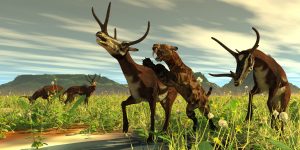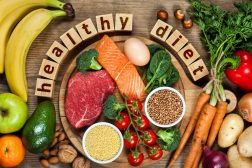Definition
noun
A phosphate ester of the 3-carbon sugar glyceraldehyde and has chemical formula: C3H7O6P
Supplement
Glyceraldehyde phosphate is a chemical compound that serves as an intermediate in several central metabolic pathways in all organisms. Its chemical formula is C3H7O6P.
This compound is an intermediate of photosynthesis and of glycolysis and gluconeogenesis.
In glycolysis, glyceraldehyde phosphate is formed during the early phase through the breakdown of fructose-1,6-bisphosphate by the action of the enzyme aldolase. During this phase, ATP is used to produce glyceraldehyde phosphate and dihydroxyacetone phosphate. The glyceraldehyde phosphate proceeds to the next phase of glycolysis. Its isomer, dihydroxyacetone phosphate, needs to be converted first to glyceraldehyde phosphate (via the enzyme triose phosphate isomerase) before moving to the next phase of glycolysis.
Glyceraldehyde phosphate is also a byproduct in the biosynthesis pathway of tryptophan, an essential amino acid. It also occurs as a reactant in the biosynthesis pathway of thiamine (vitamin b1), another substance that cannot be produced by the human body.
As for photosynthesis, glyceraldehyde phosphate is produced during the early stages of the light-independent (dark) reactions (Calvin cycle). In particular, ribulose 1,5-bisphosphate (RuBP) reacts with carbon dioxide to produce glycerate 3-phosphate by the action of the enzyme rubisco. The glycerate 3-phosphate is converted to glyceraldehyde phosphate, which is regarded as the primary end-product of photosynthesis. It may also be used as an intermediate to produce glucose, which in turn can be stored in a form of polysaccharide (e.g. starch).
IUPAC name:
- 2-hydroxy-3-oxopropyl dihydrogen phosphate
Chemical formula:
Variants:
- glyceraldehydes 3-phosphate (G3P, GA3P, GAP, GADP, GALP)
- phosphoglyceraldehyde (PGAL)
- 3-phosphoglyceraldehyde
Synonym:
See also:
- glycolysis
- carbohydrate
- triose
- Embden-Meyerhof-Parnas pathway







